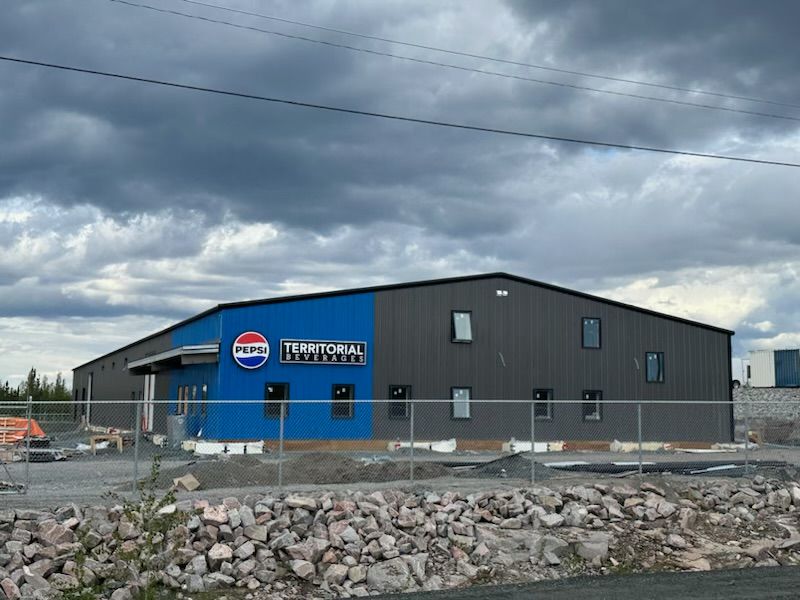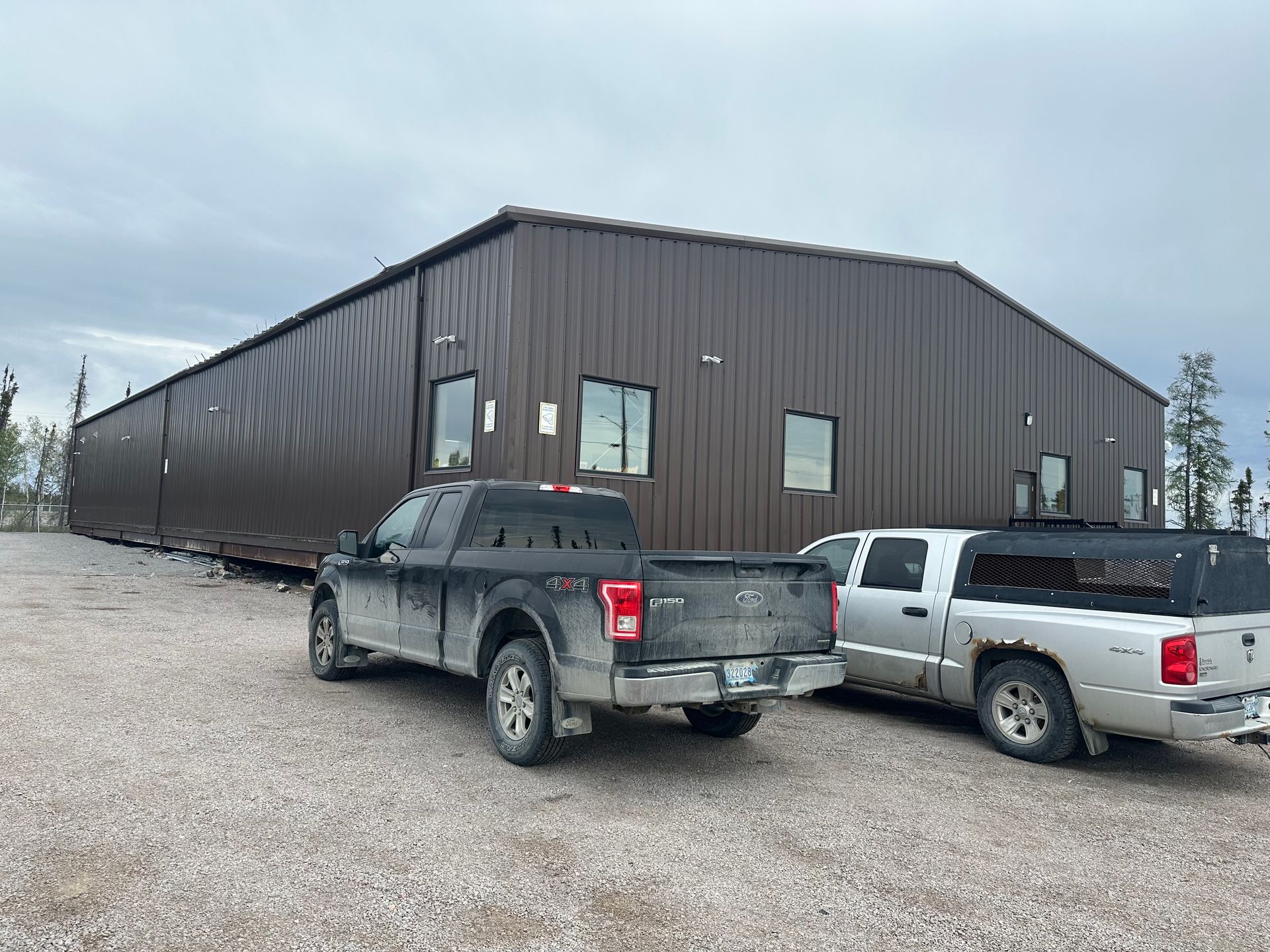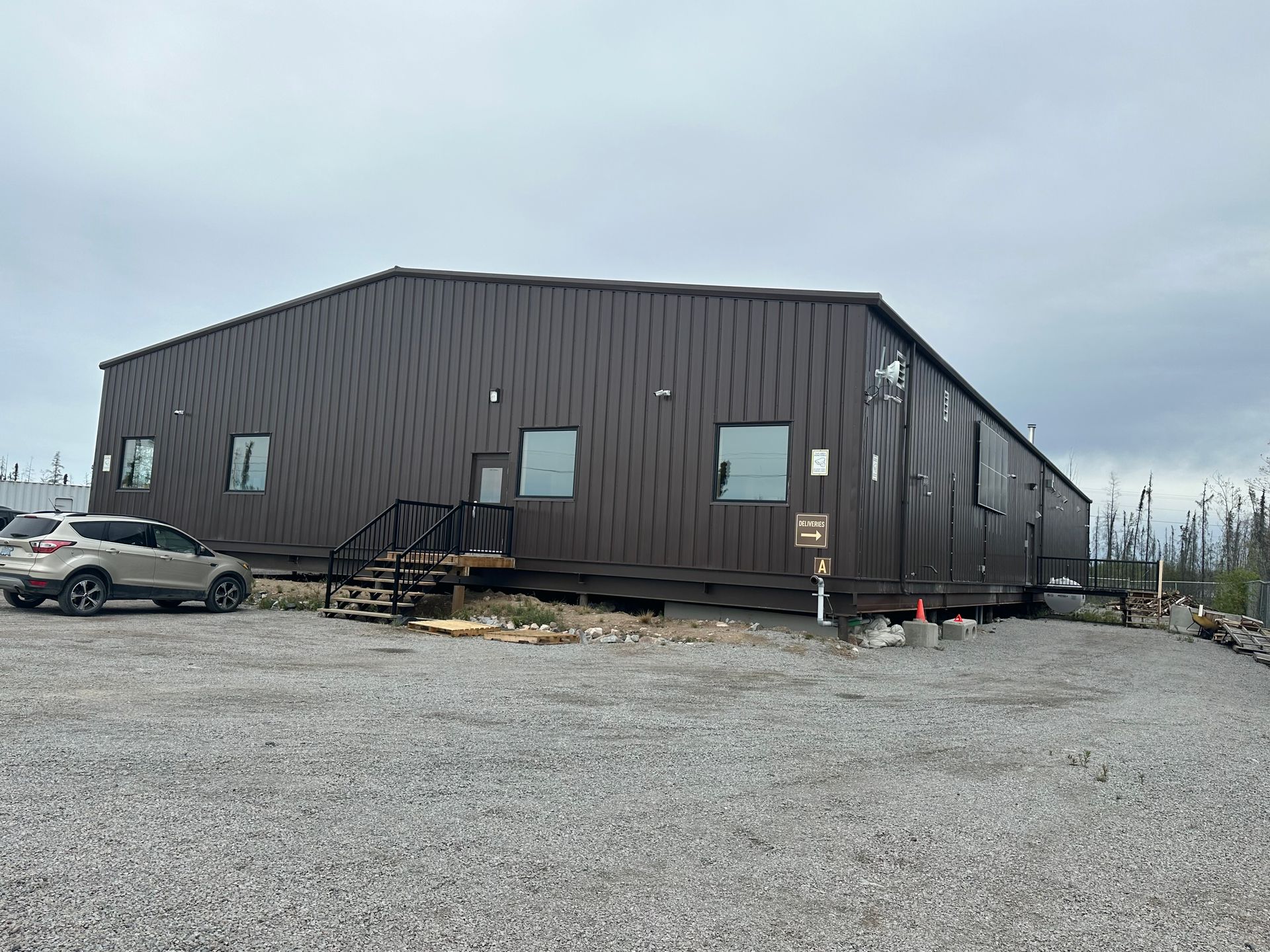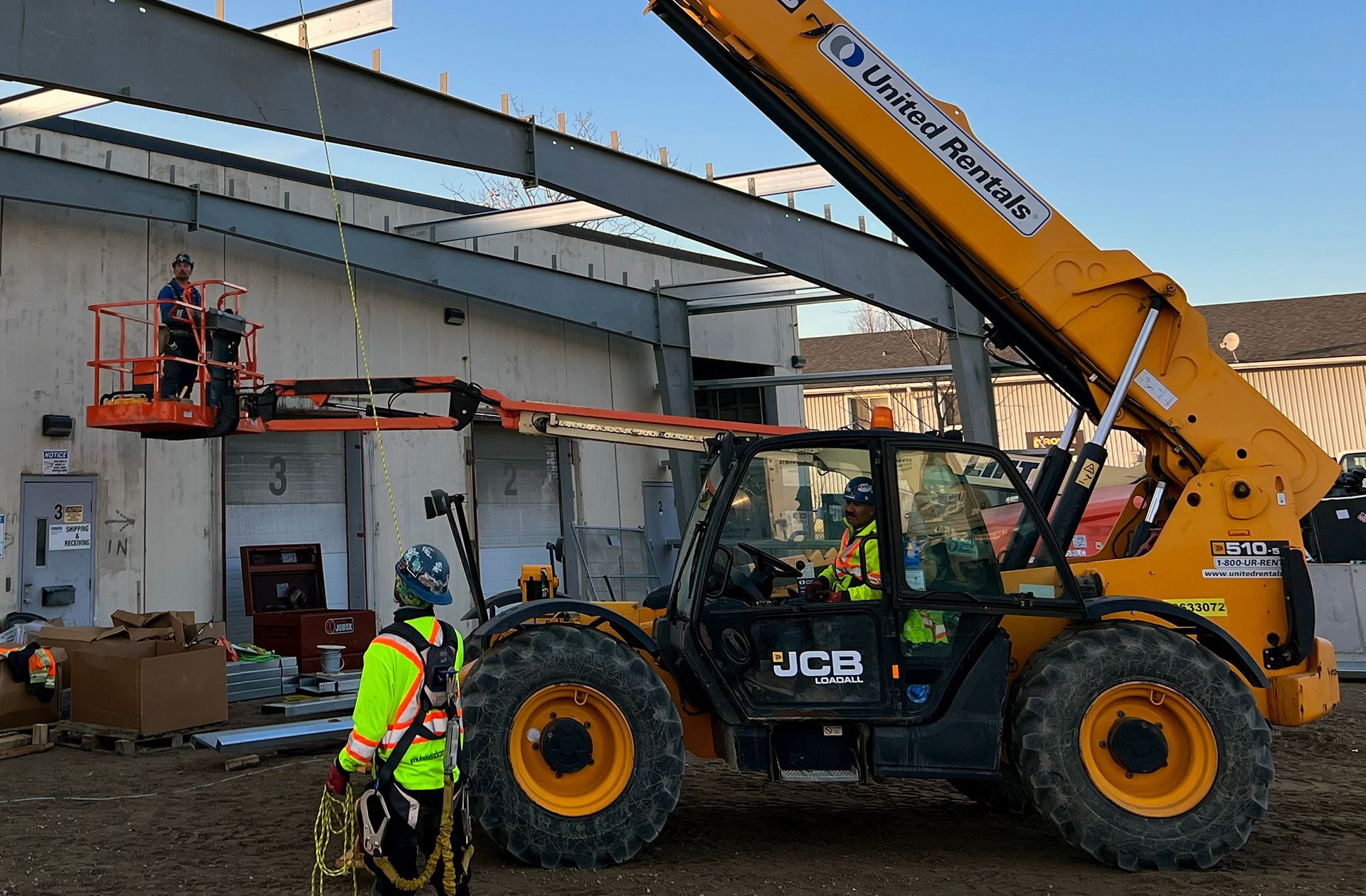Braving the Challenges of Arctic Construction
John Lohan • October 17, 2024
As economic development in Canada’s North grows, Double Black Construction has the experience to take on whatever commercial building project you require.
The Arctic is among the most extreme environments on Earth, with freezing temperatures, barren landscapes, harsh winds, prolonged winter darkness and a sense of isolation. While only the hardiest individuals call it home, its beauty and vast untapped resources make the Arctic an increasingly valuable area for development.
Construction in such a demanding environment poses unique challenges, including the remote location and limited access to materials. Double Black Construction
has completed numerous pre-engineered building projects across Canada’s North, and through these experiences, we’ve gained valuable insights into how to effectively manage the conditions and ensure successful outcomes.
Engineering in These Brutal Yet Inspiring Conditions
With economic development on the rise, more commercial and industrial buildings are in demand, including aerospace hangars, research facilities and buildings for community recreation and administration. Managing logistics and supply chains for projects in the North is a significant challenge, requiring careful planning and innovative problem-solving. Even simple tasks, such as replacing lost tools, can take weeks or months and come at a high cost.
Modern construction projects in the Arctic often rely on materials that can only be shipped during specific periods when ice-free ports allow ships to access the region. Alternative methods, such as air or truck transport, are often either impossible or prohibitively expensive.
Of course, these are modern concerns. The region’s First Nations Peoples have long mastered the art of construction in these conditions, building dome-shaped wooden structures, Tuvak conical tents, igloos, and other innovative shelters, such as the Quinee and Karmat. While Double Black Construction draws on the timeless wisdom of these traditional techniques, we now use modern materials, such as steel and concrete, to create permanent structures that withstand the extreme climate and foster community and productivity.
To combat the extreme cold, we employ advanced thermal insulation and passive heating strategies. High-quality insulation, along with triple-glazed windows and insulated metal panels, helps retain heat, ensuring our buildings remain energy-efficient and comfortable year-round.
Our building project in Whitehorse, October 2022.
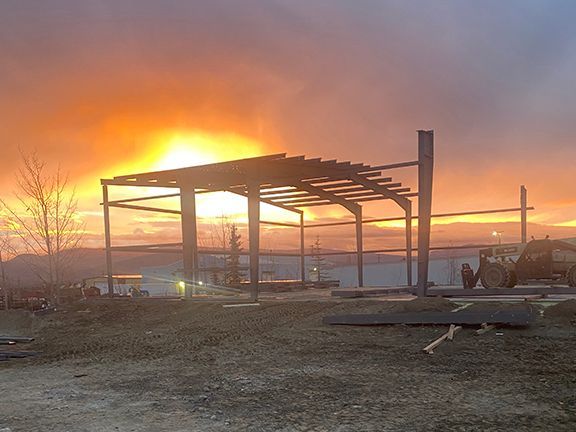
Slide title
Write your caption hereButton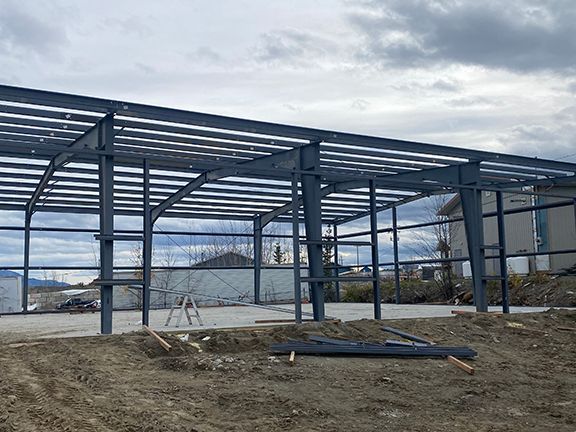
Slide title
Write your caption hereButton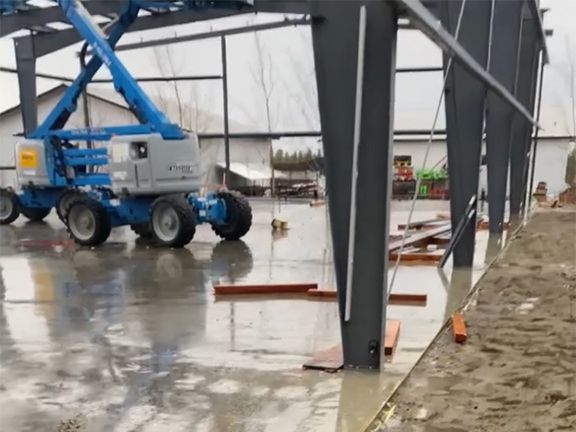
Slide title
Write your caption hereButton
Slide title
Write your caption hereButton
Arctic Architecture Presents Challenges and Opportunities
Constructing buildings in extreme climates presents numerous challenges that must be carefully considered throughout the design and production processes. Pre-engineering means that components are custom manufactured and assembled in factories across Canada
and then shipped to the location, ready for final installation. Advanced planning means everything that’s necessary is shipped by sea at once, when conditions are ideal. The method saves time and money while mitigating some of the construction issues that come with extended periods on site.
Arctic architecture demands that architects and designers
combine the needs of comfort and safety along with what’s possible for materials and engineering. The end goal of engineering and materials has been to create elegant and durable buildings with structural integrity that successfully resist the harshest conditions.
Here's a short list of the challenges faced by Arctic construction and what the Double Black Construction team does to overcome them:
- Cold Climates and Weather – Subzero temperatures, strong winds, drifting snow, freezing fog, heavy snow loads, long periods of darkness and sea ice make both construction and the use of built infrastructure difficult. We overcome these challenges by using pre-engineered steel framing, concrete and insulated metal panels. Our permanent structures are resistant to outside pressures and account for snow accumulation and weight loads, with sloped roofs to help slide off excess weight. Insulated wall and roof systems help maintain comfortable internal environment.
- Permafrost and Frozen Ground – Building on Permafrost, the permanently frozen group that’s a mix of ice and soil and can extend hundreds of metres below the surface, requires reinforced foundations built upon a system of steel piles. These metal rods are pushed deep down to rock beds to create a “bed of nails” upon which the building rests. It becomes completely stable and resistant to changing conditions at ground level. The top is then reinforced with a bed of crushed rock and a concrete foundation to support the steel framing above.
- Labour and Health Concerns – Frostbite and hypothermia are constant concerns of working outside. We protect our construction workers from prolonged exposure to the elements with insulated safety gear (to keep them warm while not hindering movement), short shifts, plenty of breaks to warm up and comfortable warm housing. Our experienced teams are made up of a combination of local skilled tradespeople and our regular crews that we bring with us.
We optimize schedules to take advantage of extended periods of daylight during summer months. We also use several crews to allow teams to work almost 24 hours a day when lighting is good and save the internal finished work for the later months when nights are much longer to ensure progress continues year-round.
Yellowknife Warehouse Project
Slide title
Write your caption hereButtonSlide title
Write your caption hereButtonSlide title
Write your caption hereButton
Bridging Modern Engineering and Local Knowledge
While construction in the Arctic has evolved over centuries, its significance has grown in recent years due to international interest in sovereignty and the discovery of mineral resources. Driven by evolving environmental conditions and emerging economic opportunities, Arctic development has become prominent with nations and corporations establishing research stations for environmental studies and business operations to stake their position. The need for reliable and essential infrastructure, housing and storage structures
has never been greater.
Double Black Construction works with building system manufacturers and general contractors to install their products on behalf of clients. When you are ready to build, let our experienced teams of Arctic builders transform your vision into reality.
About the author:
John Lohan
has over 15 years of experience designing, engineering and installing over 500 metal buildings for architects and clients across North America and the globe. He’s managed all aspects of steel building construction, including material logistics and managing local and foreign construction teams. John also has special expertise in concrete foundation and excavation. He can be contacted at Double Black Construction at (833) 322-2722, by email at john@DoubleBlackConstruction.com
or on LinkedIn.
You might also like
Book a Service Today
Thank you for contacting us.
We will get back to you as soon as possible
We will get back to you as soon as possible
Oops, there was an error sending your message.
Please try again later
Please try again later
Proud Member
Cost-Effective & Reliable
Contact us for a free quote & preliminary drawings.
Location
201 - 30610 Progressive Way
Abbotsford, B.C. V2T 6Z2 Canada
info@DoubleBlackConstruction.com
Call
833-322-2722
Navigation:
Our Focused Services:
Working hours (Pacific Standard)
- Mon - Fri
- -
- Sat - Sun
- Appointment Only
© 2025
All Rights Reserved | Double Black Construction, 2023.

